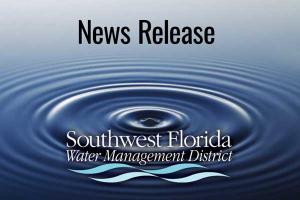Search Content
Displaying results 1761 - 1780 of 4920
The Southwest Florida Water Management District (District) awarded $104,941.81 in grants to 48 educators within the District as part of the Splash! school grant program. The program provides up to $3,000 per school to enhance student knowledge of freshwater resources in grades K-12.
Splash! grants encourage hands-on student learning through STEM (science, technology, engineering and mathematics) activities as well as engagement of the greater school community through…
Governor Ron DeSantis appointed William Hogarth and Johnnie Hall to the Southwest Florida Water Management District's Governing Board. Governor DeSantis reappointed Paul “Jack” Bispham who has served on the Governing Board since 2019. Hogarth represents Pinellas County, Hall represents Polk County and Bispham represents Manatee County.
Hogarth, of Treasure Island, is the former director of the Florida Institute of Oceanography at the University of South…
All grants are required to have a primary focus on one or more of the key topics below.Topic 1: Water Cycle BasicsLearning Concepts:
- Water exists in three different states – liquid, solid and gas.
- Water is constantly in motion through a process called the water cycle.
- The major parts of the water cycle include solar energy, evaporation, transpiration, condensation, precipitation, and percolation.
- The water cycle plays an…
Left: Donna Holdrege, District administrative supervisor, left, and Mary Torrusio, District senior communications coordinator, second from left, demonstrate a watershed model to students. Right: Dan Wolthuis, District senior heavy equipment operator, talks to students and parents about prescribed fire.
Parents marked the District’s 15th annual celebration of Take Our Daughters and Sons to Work Day on April 18 by bringing their children for tours of District…


